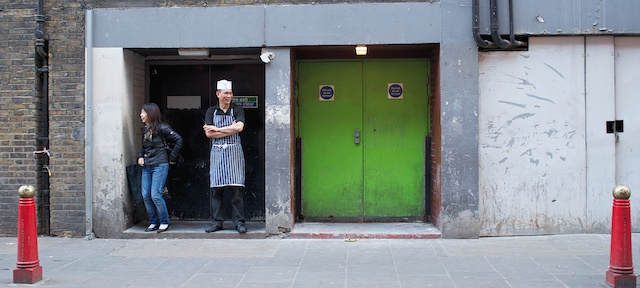The row over Thomas Piketty’s book is fascinating. Well, it is to me anyway. First, there was a wave of broadly admiring reviews — so much so that the American Right became alarmed. There’s an amusing round-up by Kathleen Geier of the dafter ones here. Megan McArdle, for example, wrote a daft piece in Bloomberg View (which opened thus:
I apologize in advance, because I am going to talk about a book that I have not yet read. To be clear, I intend to read Thomas Piketty’s “Capital in the Twenty-First Century.” It is sitting on my (virtual) bedside with a big stack of other (digital) books that I intend to read. But it’s far down in the queue, and I’m afraid that I can’t wait to weigh in — not on the book itself, but on its topic. How much does inequality actually matter?
For this, she was roundly satirised by Fredrik deBoer’s non-review of her non-review. True to form, the Wall Street Journal employed a hedge-fund manager to review Piketty’s work as “less a work of economic analysis than a bizarre ideological screed.” Who knew?
The two most serious reviews I’ve seen are the ones by Larry Summers and the former Bank of England Governor, Mervyn King, both of whom were respectful but critical. Of the two, King is more sceptical. “The claims made for Piketty’s book are exaggerated”, he writes.
It gives a fairly complete description of what we know about changes in the distribution of income and wealth over several centuries. Piketty has some important things to say about recent developments in inequality and where they might lead. But his enthusiasm to portray his work as a theory of capitalism detracts from them”.
For my money, though, the most interesting development was the critique of Piketty’s data mounted by Chris Giles, the Financial Times Economics editor. Giles made lots of specific complaints, but the essence of his criticism focussed on his assertion that Piketty’s estimates of wealth concentration in the US and the UK were too high.
This led at least one of my journalistic colleagues to proclaim gleefully at breakfast that “Piketty was getting a bit of a pasting”, a characterisation that was hotly disputed by me, for a number of reasons, one of which was that it was typical of the journalistic mindset which portrays every public debate as a football or boxing match in which there are “winners” and “losers”, whereas this was a debate about the second most important issue that faces democracies (the most important being climate change).
My reading of Giles’s criticisms was that they were typical of the kind of thing one would find in a reviewer’s report for a peer-reviewed journal. Criticisms of data, and of the inferences drawn from them, are par for the academic course. And of course they were only possible because Piketty published all his data precisely so that critics could pore over them at will. Giles’s analysis, in contrast, was hidden behind the FT‘s impenetrable paywall.
And, in a way, the most depressing thing about the whole spat was the way the FT played it. What its Economics Editor did was perfectly appropriate. But his newspaper chose to present it, not as a contribution to an important debate, but as an expose.
Simon Wren-Lewis, an Oxford Economics professor, expressed this view very well on his blog:
When an academic, or student, thinks they have found a mistake in an academic paper or book, what do they do? Check their calculations again and again, or course. Ask someone else to do the same, maybe. But then they will write to the authors of the original work, and ask them to comment. What they will not do, in that letter or email, is to give the original author a deadline of one day to respond. That was how much time Chris Giles of the Financial Times gave Thomas Piketty to respond to his long list of alleged errors and unexplained adjustments.
I think it might have been very different if Chris Giles had written a piece about the difficulty of interpreting wealth inequality data, and had wanted to get clarification of what Piketty had done and why. I suspect in that case the paper would have given Piketty more time to respond (what was the urgency?), and the article would have benefited greatly from that dialog.
But that was not the article that Chris Giles chose to write and the Financial Times chose to publish. Instead they wrote an exposé, in much the same way as you would expose some wrongdoing by a politician. (Is an academic making a spreadsheet error the equivalent of a politician having an illicit affair?) The phrase they use in football is playing the man and not the ball.
, in the unlikely event that I ever warranted a headline story, I know I would not want to be treated in the way Giles treated Piketty. There were only two possible justifications for writing a story of that kind. One was if the paper had clear evidence that Piketty had fiddled the numbers to get the results he wanted, and it is obvious they did not have that evidence. The other is that they had found so many simple mistakes that this discredited Piketty as an academic. Again this was not the case. 2
I also get very cross with academics who suggest that, because his book had become a bestseller and he had accepted invitations to talk to White House staff, he somehow deserved this kind of treatment. This seems to me like hypocrisy at its worst. Given this treatment, both Thomas Piketty’s initial response and his more detailed response issued yesterday are remarkable and impressive in their restraint.
In its handling of this issue, the Financial Times, in my opinion, has damaged its brand.



